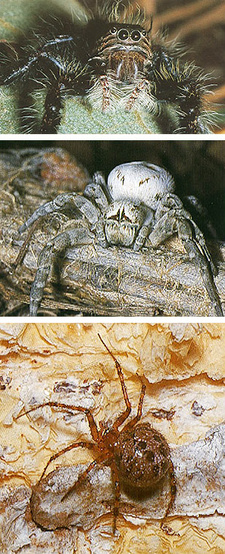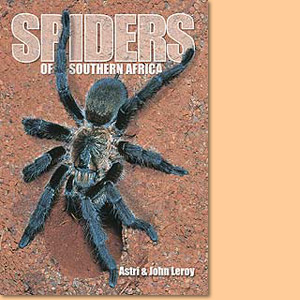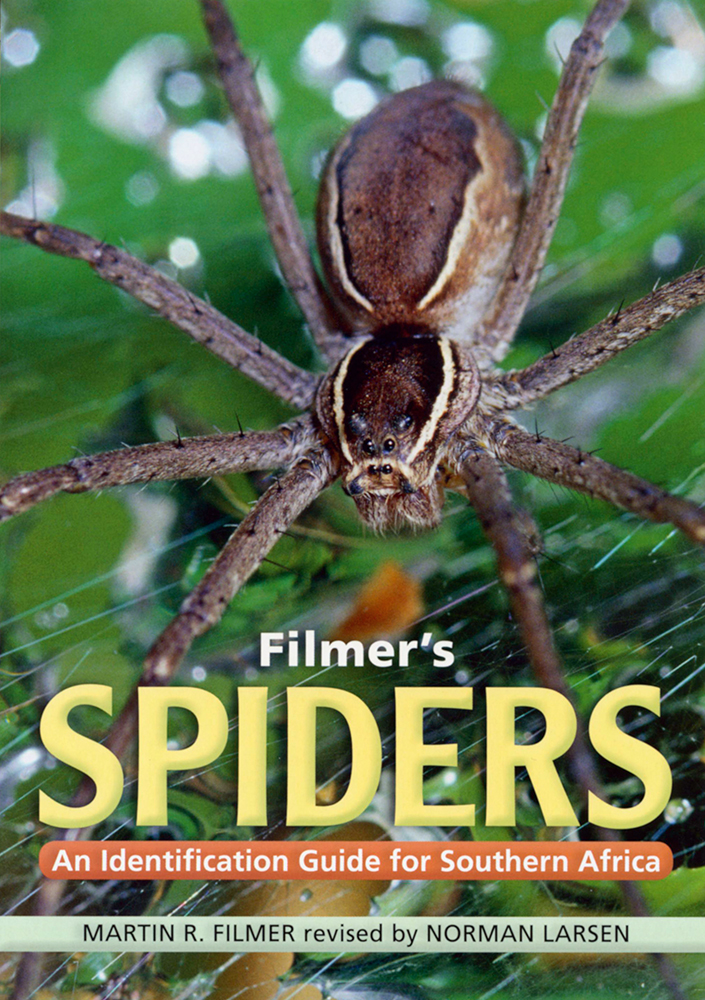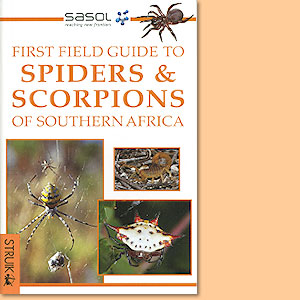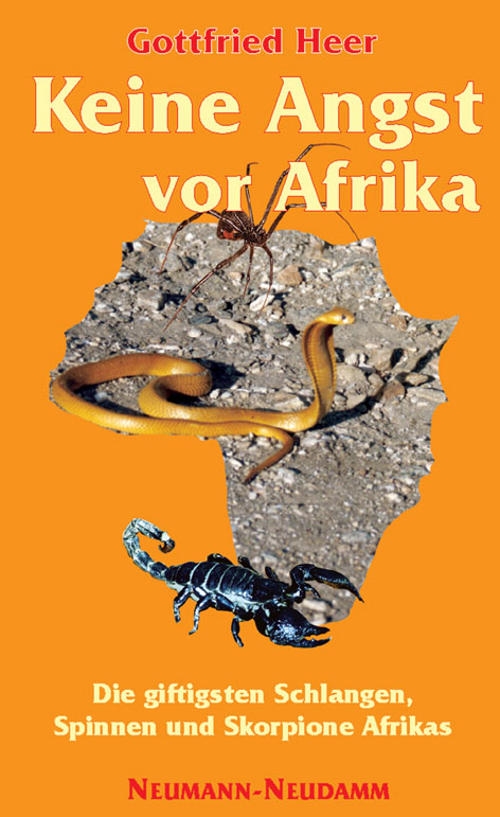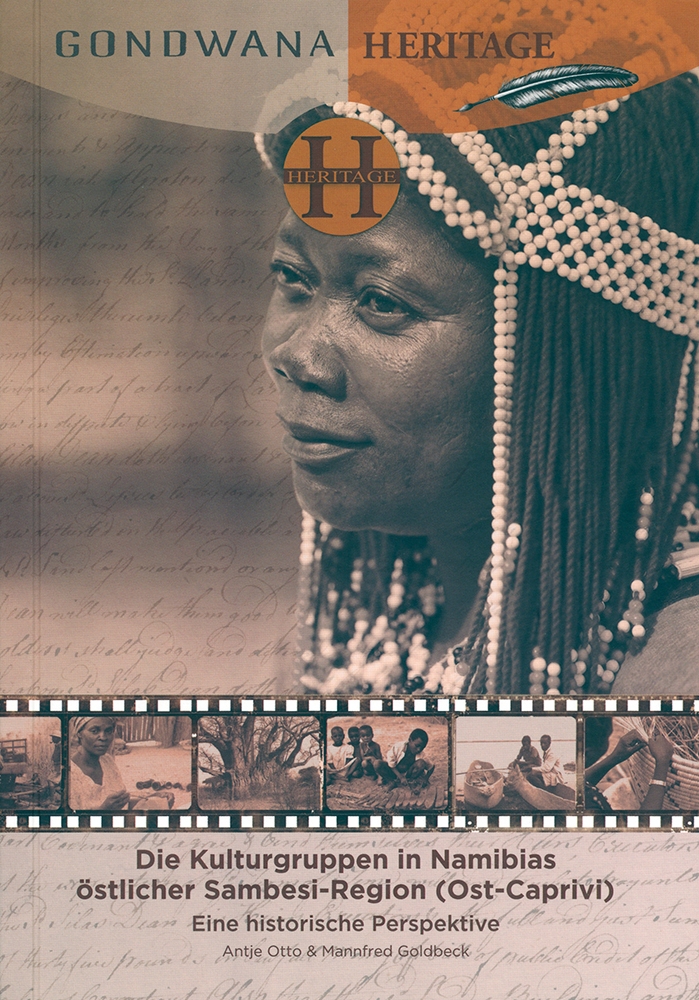Spiders of Southern Africa, by John Leroy and Astri Leroy
The guide Spiders of Southern Africa, written by John Leroy and Astri Leroy, gives a sharp insight into a complex, often mysterious and always fascinating world of arachnids.
Many people think that spiders have too many legs; that they're probably deadly poisonous, dirty, and that they build ugly webs in neglected comers. This is entirely untrue. Spiders are, in fact, clean creatures with varied and intriguing lifestyles. Some spiders are beautiful, others cheekily enchanting, and many build webs that are exquisitely intricate. They're useful too, and help to keep insect numbers in check. In essence, spiders are small, predatory animals with eight jointed legs, external skeletons, two main body parts and simple eyes. They produce silk, lay eggs and do not metamorphose. Unless you live in polar regions, there is at least one, probably more, not very far from you right now. However, they have no intention whatsoever to harm you. The questions most commonly asked about spiders are: How poisonous are they? How many are deadly? And what's the biggest spider in the world? But if you want to appreciate spiders you should rather learn to ask: What spider is that? What do spiders eat? And how do they build their webs? This book has been designed to answer these and other questions, to allay fears and debunk myths, and, in the process, will hopefully generate a greater awareness of these fascinating creatures. The southern African subregion comprises South Africa, Lesotho, Swaziland, Namibia, Botswana, Zimbabwe and Mozambique south of the Zambezi River. Although in this book the main emphasis is on spiders from the southern African subregion, interesting facts about spiders from the rest of Africa and other continents have also been included. Southern Africa encompasses an enormous variety of habitats, which is one of the reasons why so many different spiders are found here compared to most other regions of the world. The southern African region ranges from tropical lowlands to windswept mountain peaks, from wetlands to deserts, forests, grasslands, bushveld, seashores and wood-lands. Some habitats have been severely altered by humans, while other true wilderness areas remain unspoilt. The climate ranges from arid to humid, includes summer and winter rainfall areas, and creates local variations such as snowfalls in the high mountains and extreme heat in the desert areas. Spiders live in all these places and under all these conditions.
At present, the southern African region supports 64 of the 106 spider families known to occur worldwide. They represent approximately 3800 recorded species, which range in size from a gigantic (for spiders) 60 mm to a tiny 0,48 mm, and include spiders that live along the shoreline, 'swim' in desert sand, 'cartwheel' down dunes to escape predators, and mimic ants and wasps to fool their enemies. Some of the region's male spiders tie their partners down before mating, while others stroke their mates' abdomens to get them 'in the mood'; one family (Uloboridae) has no venom glands at all, while some species of black button spiders are among the most venomous spiders in the world. The majority of spiders found in the region, however, are small, inoffensive creatures that keep mostly to themselves.
This is an excerpt from the book: Spiders of Southern Africa, by John Leroy and Astri Leroy.
Title: Spiders of Southern Africa
Authors: John Leroy; Astri Leroy
Struik Publishers
Cape Town, South Africa 2003
ISBN 9781868729449
Softcover, 15x21 cm, 96 pages, many colour photos
Leroy, John und Leroy, Astri im Namibiana-Buchangebot
Spiders of Southern Africa
The guide Spiders of Southern Africa gives a sharp insight into a complex, often mysterious and always fascinating world of arachnids.
Weitere Buchempfehlungen
Filmer's Spiders. An Identification Guide For Southern Africa
Filmer's Spiders Identification Guide For Southern Africa features all 63 families of spider that occur in this region.
First Field Guide to Spiders and Scorpions of Southern Africa
These little guides are an invaluable resource for beginners
Keine Angst vor Afrika
Ein reich bebilderter Notfallratgeber bei Schlangen- und Spinnenbissen für Touristen und Tourguides
Die Kulturgruppen in Namibias östlicher Sambesi-Region (Ost-Caprivi)
Die Kulturgruppen in Namibias östlicher Sambesi-Region (Ost-Caprivi): Eine historische Perspektive und ein Kapitel über Baobabs.
Keith Kirsten's Garden Plants & Flowers
Keith Kirsten’s Garden Plants & Flowers is a compact directory of trees, shrubs and flowering plants that are ideal for growing in South African gardens.

